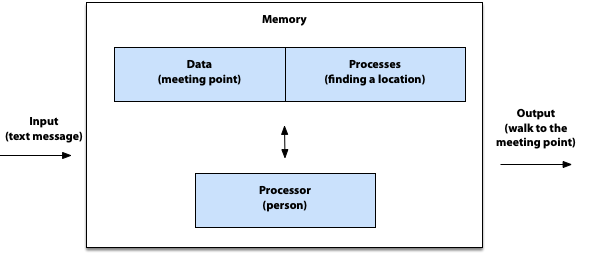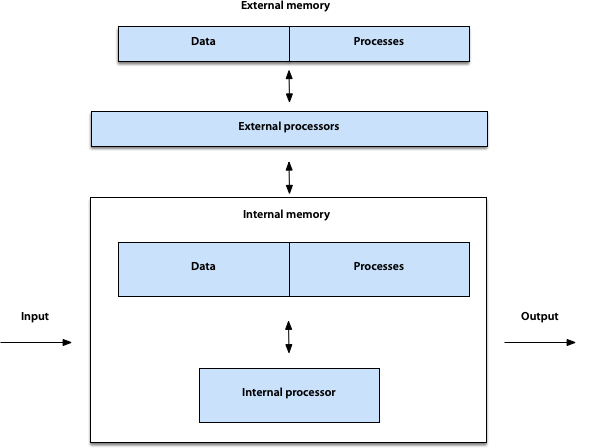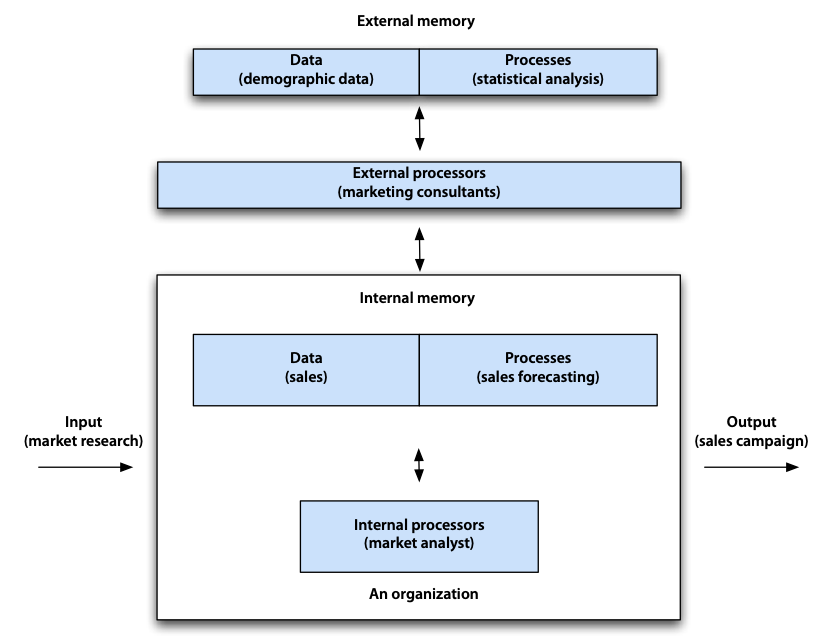Section 1 The Managerial Perspective
People only see what they are prepared to see.
Ralph Waldo Emerson, Journals, 1863
Organizations are accumulating vast volumes of data because of the ease with which data can be captured and distributed in digital format (e.g., smartphone cameras and social media posts). The world’s data are estimated to be doubling every 1-2 years, and large companies now routinely manage petabytes (1015 bytes) of data daily. The web contains 3.1 billion pages or around 400 terabytes (1012 bytes) of content.
[^100-1](https://commoncrawl.org/blog/may-june-2023-crawl-archive-now-available)
Data management is a critical function for many organizations.
The first section of this book prepares you to see the role of data and information in an organization. The managerial perspective on data management concentrates on why enterprises design and maintain data management systems or organizational memories. Chapter 1 examines this topic by detailing the components of organizational memory and then discussing some of its common problems. The intention is to inform you of the scope of data management and its many facets. Chapter 2 discusses the relationship between information and organizational goals. Again, a comprehensive outlook is adopted to provide a sweeping perspective on the relationship of information to organizational success and change.
At this point, we want to give you some maps for understanding the territory you will explore. Since the terrain is possibly very new, these maps initially may be hard to read, and so you may need to consult them several times before you understand the landscape you are about to enter.
The first map is based on the Newell-Simon model4 of the human information processing system, which shows that humans receive input, process it, and produce output. The processing is done by a processor linked to a memory that stores data and processes. The processor component retrieves both data and processes from memory.

To understand this model, consider a person arriving on a flight who has agreed to meet a fellow traveler in the terminal. She receives a text message to meet her friend at B27. The message is input to her human information processing system. She retrieves the process for interpreting the message (i.e., decoding that B27 means terminal B and gate 27). The person then walks to the terminal and gate, the output. Sometimes, these processes are so ingrained in our memory that we never think about retrieving them. We do them automatically.
Human information processing systems are easily overloaded. Our memory is limited, and our ability to process data is restricted; thus, we use various external tools to extend and augment our capacities. A contacts app is an instance of external data memory. A recipe, a description of the food preparation process, is an example of external process memory. Smartphones are now the external memory and processor of choice we use to augment our limited processing capacity.
The original model of human information processing can be extended to include external memory for storing data and processes and external processors for executing processes.

This model of augmented human information processing translates directly to an organizational setting. Organizations collect inputs from the environment: market research, customer reviews, and competitor actions. They process these data and produce outputs: sales campaigns, new products, price changes, and so on. The following figure gives an example of how an organization might process data. As a result of some market research (input), a marketing analyst (an internal processor) retrieves sales data (data) and does a sales forecast (process). The analyst also requests a marketing consultant (an external processor) to analyze (process) some demographic reports (data) before deciding to launch a new sales campaign (output).

An organization’s memory comes in a variety of forms, as you will see in Chapter 1. This memory also can be divided into data and processes. The data part may contain information about customers. The process portion may store details of how to handle a customer order. Organizations use a variety of processors to handle data, including people and computers. Organizations also rely on external sources to extend their information processing capacity. For example, a business may use a specialist credit agency to check a customer’s creditworthiness, or an engineering firm may use a cloud computing service for the structural analysis of a bridge. Viewed this way, the augmented human information processing model becomes a pattern for an organizational information processing system.
This book focuses on the data side of organizational memory. While it is primarily concerned with data stored within the organization, there is also coverage of data in external memory. The process side of organizational memory is typically covered in a systems analysis, and design or a business process management course.
Newell, A., & Simon, H. A. (1972). Human problem solving. Englewood Cliffs, NJ: Prentice-Hall.↩︎